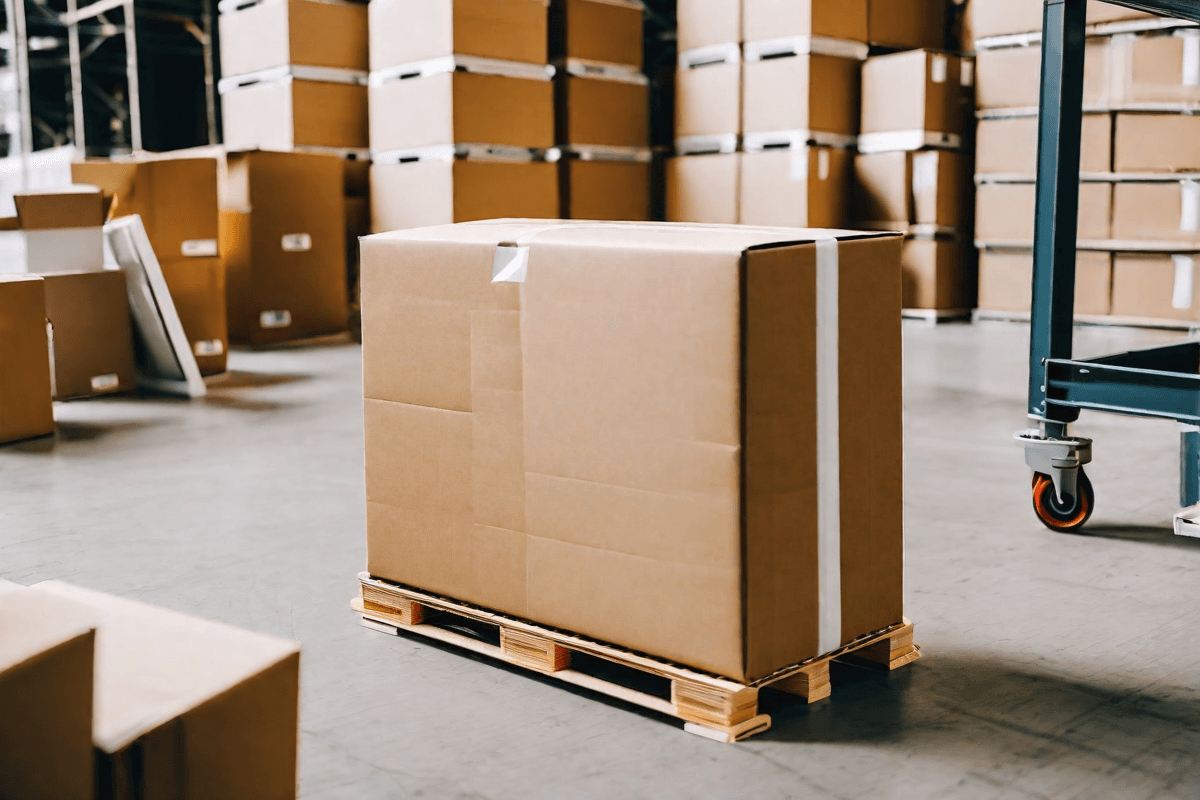
Optimizing Your Shopify Store: Tips for Better Performance and Conversions
In today's fast-paced digital world, it has become crucial for online businesses to optimize their websites for better performance and conversions. If you run an online store using Shopify, you need to adapt to the changing market trends and industry standards to stay ahead of the competition. In this article, we will provide you with some practical tips and techniques that you can implement to improve your Shopify store's performance and conversion rates.
Understanding the Importance of Optimization
Optimization is a crucial aspect of running a successful Shopify store. It involves making changes and improvements to your website to enhance its performance, improve user experience, increase conversion rates, and boost search engine rankings. By optimizing your site, you can attract more visitors, retain customers, and ultimately increase your revenue.
Performance and Conversion Rates
Performance is one of the most critical factors in determining the success of your Shopify store. A well-optimized site should load quickly, be responsive, and function smoothly to provide a seamless user experience. By improving your site's performance, you can reduce bounce rates and increase the time visitors spend on your site, which can ultimately improve your conversion rates.
Conversion rates refer to the percentage of visitors who complete a desired action on your site, such as making a purchase or filling out a form. By optimizing your site's design, content, and user experience, you can increase the likelihood of visitors completing these actions and becoming customers. This can ultimately lead to increased revenue and business growth.
User Experience and Retention
Optimizing your Shopify store can also improve user experience and retention. A well-designed and easy-to-navigate site can make it easier for customers to find what they're looking for and make a purchase. Additionally, a positive user experience can lead to increased customer loyalty and repeat business, which is essential for the long-term success of your store.
Retention is crucial because it's often more cost-effective to retain existing customers than to acquire new ones. By providing an excellent user experience and optimizing your site for customer retention, you can increase your chances of building a loyal customer base that will return to your store time and time again.
SEO and Organic Traffic
Search engine optimization (SEO) is another critical aspect of optimizing your Shopify store. SEO involves making changes to your site's design, content, and structure to improve its visibility in search engine results pages (SERPs). By optimizing your site for SEO, you can increase your chances of ranking higher in search results, which can lead to more organic traffic and ultimately more sales.
Some of the best practices for optimizing your site for SEO include optimizing your meta tags, using targeted keywords, and improving your site's loading speed. By implementing these changes, you can make your site more visible to search engines and increase your chances of attracting more visitors to your store.
In conclusion, optimization is a critical aspect of running a successful Shopify store. By improving your site's performance, user experience, and search engine visibility, you can attract more visitors, convert them into customers, and ultimately increase your revenue and business growth.
Analyzing Your Shopify Store's Performance
As an online business owner, it is important to regularly analyze your Shopify store's performance to ensure that it is running at its best. A well-optimized store can lead to increased traffic, higher conversion rates, and ultimately, more sales. In this article, we will discuss some key steps you can take to analyze and optimize your Shopify store's performance.
Identifying Areas for Improvement
One of the first steps in optimizing your Shopify store is to identify areas that need improvement. This can be done by analyzing your site's performance using tools such as Google Analytics, Shopify Analytics, and other performance monitoring tools. These tools can provide valuable insights into factors such as site speed, page load times, bounce rates, and exit pages.
For example, if you notice that your site has a high bounce rate on a particular page, this may indicate that the page is not engaging enough for visitors. You can then take steps to improve the page's content, layout, or design to make it more appealing to visitors.
Monitoring Key Performance Indicators (KPIs)
Once you have identified areas that need improvement, it is important to monitor your key performance indicators (KPIs) regularly to ensure that your optimization efforts are paying off. KPIs are metrics that can help you measure the success of your store's performance.
Some important KPIs to monitor include conversion rates, traffic sources, and average order value. By tracking these metrics over time, you can see whether your optimizations are having a positive impact on your site's performance.
Utilizing Shopify Analytics Tools
Shopify offers a variety of built-in analytics tools that can help you analyze your store's performance and make data-driven decisions. These tools include the Shopify Dashboard, Sales Reports, and Live View.
The Shopify Dashboard provides a snapshot of your store's sales, orders, and traffic in real-time. You can use this information to quickly identify trends and make adjustments to your store's marketing or promotional efforts.
Sales Reports provide more detailed information about your store's sales performance, including metrics such as total sales, average order value, and top-selling products. This information can help you identify areas where you can improve your store's sales and profitability.
Live View allows you to see how visitors are interacting with your store in real-time. You can use this information to identify areas where visitors may be getting stuck or experiencing issues, and make adjustments to improve their experience.
By utilizing these tools and regularly analyzing your store's performance, you can make data-driven decisions that will help you optimize your Shopify store for success.
Improving Your Store's Speed and Performance
As an online store owner, it's important to ensure that your website is running at optimal speed and performance to provide your customers with the best possible shopping experience. Slow-loading pages can lead to frustration and decreased sales, so it's crucial to take steps to improve your site's speed and performance.
Optimizing Images and Media
One of the biggest culprits behind slow-loading pages is large images and media files. These files can take up a lot of space on your server and take longer to load. To optimize your images and media, you can reduce their file size without losing quality. Use image compression tools, such as TinyPNG or JPEGmini, to compress your images and reduce their file size. This will help improve your loading speed and provide a better user experience for your customers.
Another way to optimize your images is to choose the right file format. For example, JPEGs are best for photographs, while PNGs are better for images with transparency. By using the right file format, you can further reduce the file size and improve your site's speed and performance.
Minimizing App and Theme Bloat
Apps and themes can also slow down your site's overall speed and performance if they are not properly optimized. It's important to regularly review and delete any unused apps to reduce the amount of code on your site. Additionally, choose a theme that is lightweight and optimized for speed. A simple, streamlined theme will load faster and provide a better user experience for your customers.
If you're not comfortable with editing your site's code, you can hire a Shopify expert to help you streamline your site's code and eliminate any unnecessary bloat. This can help improve your site's speed and performance, as well as ensure that your site is running smoothly.
Leveraging Browser Caching and Content Delivery Networks (CDNs)
Browser caching and CDNs are two techniques that can help you improve your site's speed and performance. Browser caching allows your site to store commonly used files locally on a user's computer, reducing the need to download them again. This can significantly improve your site's loading speed, especially for returning visitors.
CDNs distribute your content across multiple servers worldwide, reducing the distance that data needs to travel and improving your site's loading speed. This can be especially helpful if your customers are located in different parts of the world.
By leveraging browser caching and CDNs, you can improve your site's speed and performance, providing a better user experience for your customers and potentially increasing your sales.
Enhancing User Experience and Design
Creating a user-friendly website is essential to the success of any online business. The design and layout of your site can make a significant impact on how customers perceive your brand and interact with your products. Here are some additional tips for enhancing user experience and design:
Streamlining Navigation and Site Structure
When it comes to website navigation, less is often more. A well-structured site with clear navigation can help users find the products they are looking for quickly and easily. Consider grouping similar products or services together under specific categories. Avoid cluttered menus or drop-downs that can overwhelm users and make it difficult to find what they need. A streamlined checkout process is also critical to improving the overall user experience. Make sure the checkout process is easy to follow and doesn't require too many steps.
Implementing Responsive Design for Mobile Users
More and more customers are using mobile devices to access online stores. Implementing responsive design ensures that your site is optimized for all devices, including smartphones and tablets. This means that your site will adjust its layout and content to fit the screen size of the device being used. Optimize the size and placement of images, buttons, and text to provide the best possible experience for mobile users. Consider using mobile-specific features such as click-to-call buttons or location-based services to enhance the mobile user experience.
Utilizing Clear Calls-to-Action (CTAs)
A clear call-to-action (CTA) is essential to guide users towards the desired action on your site, such as making a purchase or subscribing to a newsletter. Use clear and concise language to let users know what action you want them to take. Make sure the CTA stands out on the page and is easy to find. Experiment with different colors, shapes, and placements to find what works best for your site. Consider using multiple CTAs throughout your site to increase the chances of users taking the desired action.
By following these tips, you can create a website that is both visually appealing and user-friendly. Remember to regularly test and update your site to ensure that it continues to meet the needs of your customers.
Conclusion
Optimizing your Shopify store is an ongoing process that requires constant vigilance and attention. By implementing the tips and techniques discussed in this article, you can improve your site's performance and conversion rates, increase customer retention, and grow your business. Remember to monitor your site's performance regularly and adapt to changing market trends and user behavior to stay ahead of the competition.
Nitro Logistics Team
Logistics Expert
The Nitro Logistics team brings together decades of experience in logistics, fulfillment, and supply chain optimization.
Stay Updated
Get the latest insights in logistics and fulfillment delivered to your inbox.


